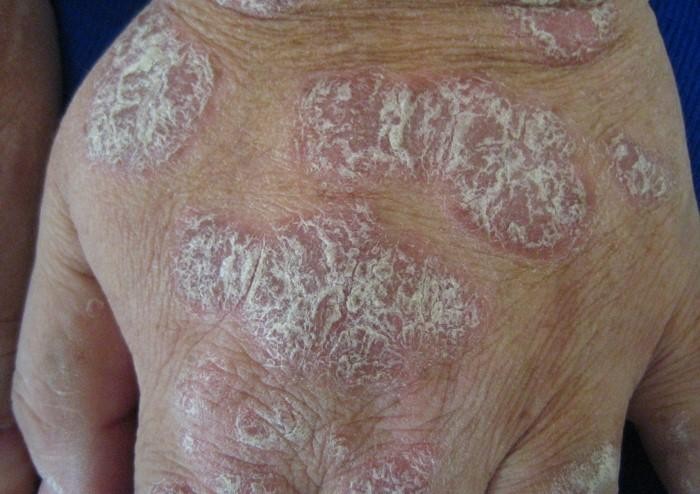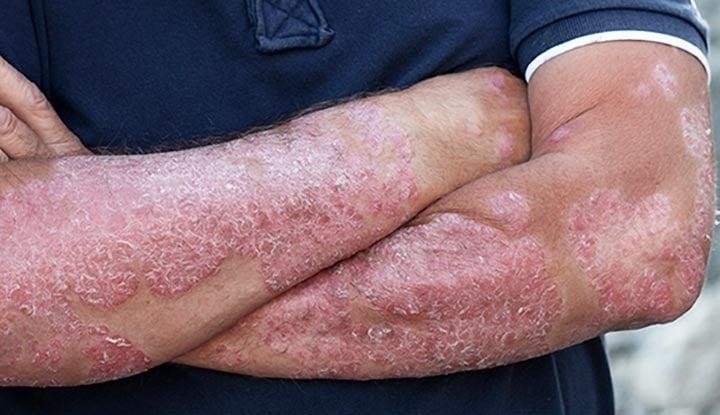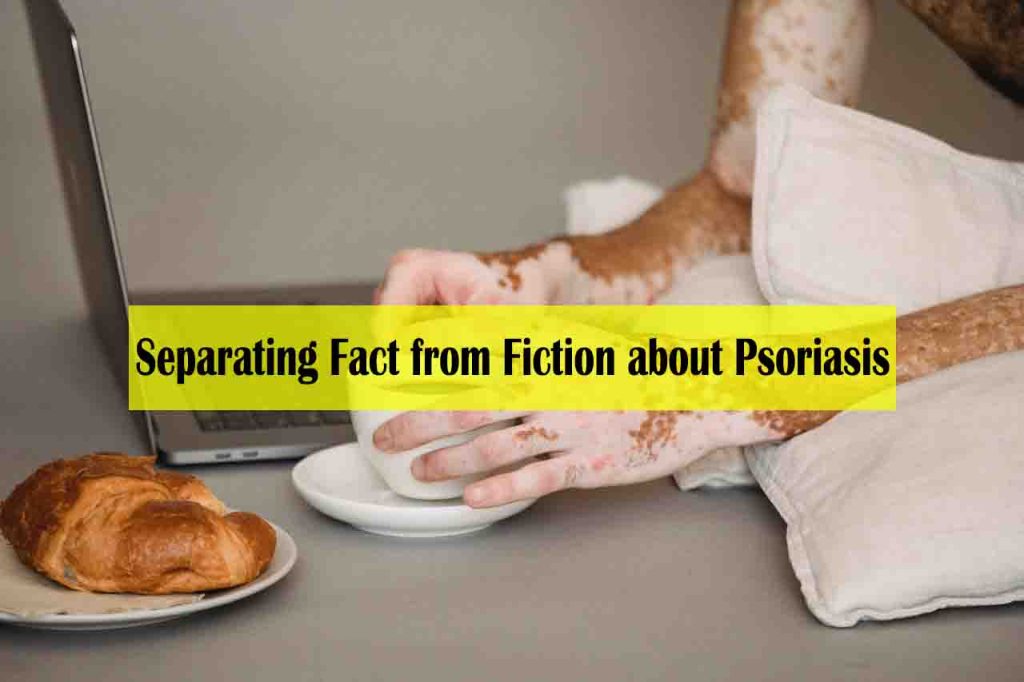Psoriasis is a relatively prevalent immune-mediated skin ailment. It causes flaky, crusty patches to appear, often around the scalp, elbows, back, and knees. The patches are usually purple or violet on dark skin and red on light skin. According to a 2020 study, at least 3% of the population in the U.S., 1.99% in Australasia, and 0.14% in East Asia have the ailment.

The myths and misconceptions surrounding it are among the top reasons psoriasis infections have been so challenging to control. These myths and misconceptions have led many people with psoriasis in the United States to face stigma. Educational campaigns by medical practitioners and the public can help eradicate this stigma.
In that regard, we will uncover the top six persistent myths surrounding psoriasis. We are leveraging the latest psoriasis research and trends to separate fact from fiction.
Myth 1: Psoriasis is a Contagious Ailment
Fact: Psoriasis is an immune-mediated skin ailment that can’t be transmitted from person to person. The Psoriasis and Psoriatic Arthritis Foundation believes that genetics significantly influence the onset of this illness. For instance, if one parent has the condition, their children have a 15% chance of developing psoriasis. The odds skyrocket to 75% if both parents have psoriasis.
Other factors that contribute to the onset of psoriasis are smoking, stress, strep throat, respiratory and ear infections, weight gain, and too much or too little sunlight. According to Mark G. Lebwohl, M.D., no virus, bacteria, or fungi are involved in psoriasis. Therefore, you can’t contract the ailment through skin-to-skin contact with another person, such as kissing. Dr. Lebwohl is the dean of clinical therapeutics at Mount Sinai Hospital’s Icahn School of Medicine in New York City.
Myth 2: There’s Only One Type of Psoriasis
Fact: There’s more than one type of psoriasis, the most common one being large plaque psoriasis which appears as thick silvery scales. Other prevalent types are:
• Inverse psoriasis: This only forms in skin regions that often make contact with other skin regions, like the groin, armpits, and under the breasts.
• Guttate psoriasis: also known as “raindrop psoriasis” because it appears as tear-shaped scaly patches.
• Pustular psoriasis: which manifests as pus-filled bumps on the hands and feet
• Erythrodermic psoriasis: which manifests as a peeling rash that covers most of the body
Myth 3: Eczema and Psoriasis are the Same Ailments
Fact: Although both conditions result in similar symptoms, such as skin discoloration, itching, and a rash, they are not the same disease. According to Dr. Lebwohl, the cytokines (cells and chemicals) that cause the two ailments are totally different. Additionally, the conditions don’t look alike; Psoriasis plaques manifest as thick skin covered in scales, while eczema appears as bumpy skin rash.
Moreover, treatments for psoriasis won’t work on eczema and vice versa. Dr. Lebwohl added that while both conditions can cause itching, itching is less common and less severe in psoriasis. On the other hand, the itching is customary for eczema and is more severe.
Myth 4: Psoriasis Only Attacks the Skin
Fact: Although psoriasis is most noticeable on the skin, the ailment is skin-deep. Up to 42% of people who suffer from psoriasis develop psoriatic arthritis, an inflammatory arthritis that affects joints in the hands, feet, and knees. Psoriatic arthritis can advance to areas where tendons attach to the lower feet, such as the lower back and heels.

Besides its physical effects, the ailment can also have a massive psychological impact. Many people with psoriasis also suffer from low confidence and self-esteem, depression, and anxiety. These psychological conditions negatively affect their daily lives.
Myth 5: There are No Treatments for Psoriasis
Fact: While there is no cure for psoriasis, there are numerous treatments that can aid in alleviating the symptoms of psoriasis. These treatments range from foams, gels, topical creams, and ointments. Disease-modifying drugs in the form of tablets or injections and light therapy, including tanning for psoriasis, are also viable treatment options.
Tanning lessens the appearance of psoriasis, and light therapy dulls the inflammation associated with the condition. The treatment plan the doctor recommends will depend on how severely a person is affected by the ailment. Keep in mind that all the treatments have varying advantages and associated risks. Adopting a healthy lifestyle that involves staying active, limiting alcohol, and consuming a nutritious, balanced diet can help the treatments be more effective.
Myth 6: Psoriasis Only Affects Adults
Fact: Psoriasis can affect persons of all ages, even kids and infants. Roughly 20,000 kids below age 10 are diagnosed with the condition annually. Additionally, about one-third of new cases annually are in patients below 20 years. For this reason, every parent with psoriasis should be on the lookout for signs of the onset of the ailment in their children. In infants, the disease will manifest as a red well-set-out plaque, not the thick white scale common in classic psoriasis. For older kids, the ailment usually emerges after an infection, especially a strep throat infection.

